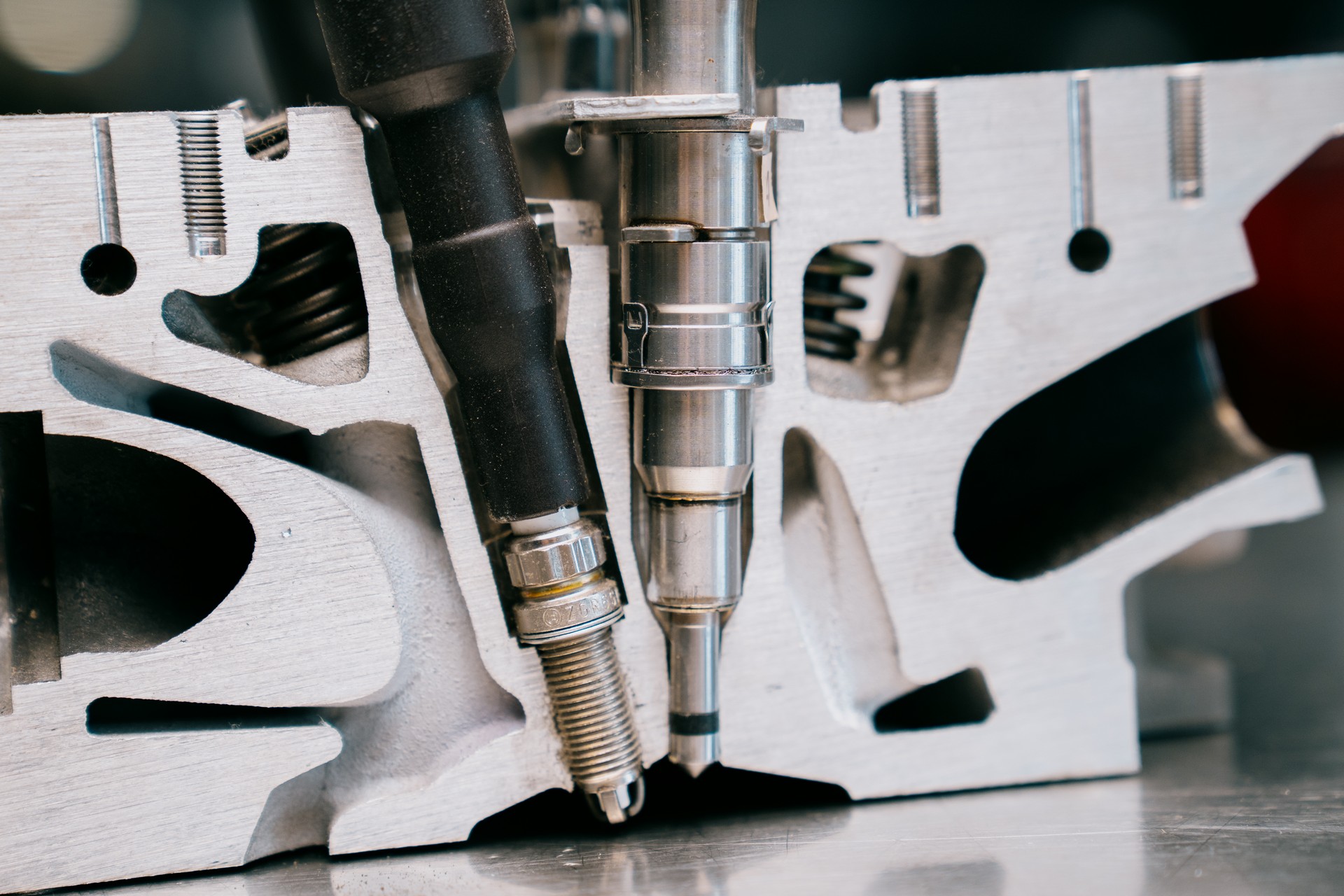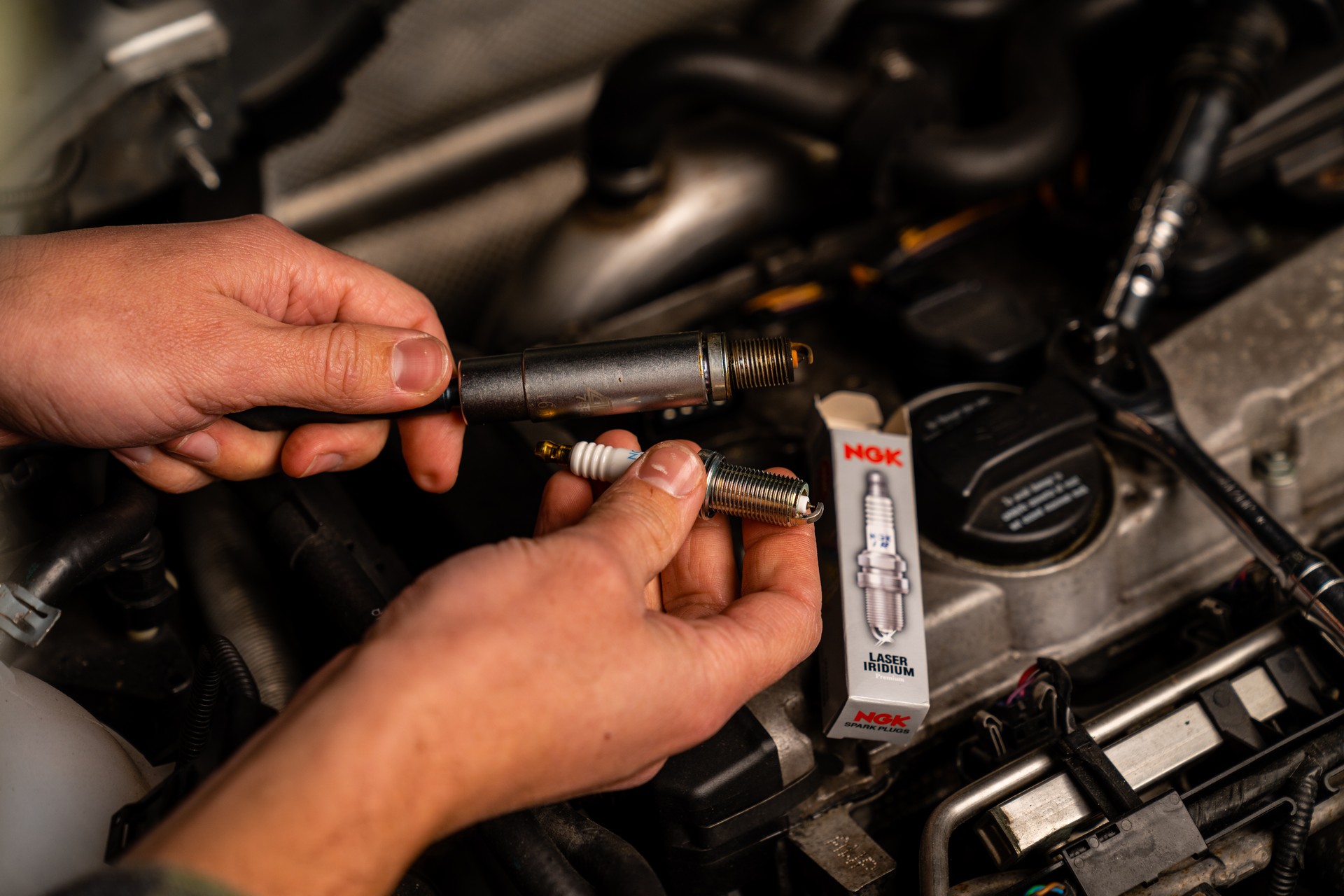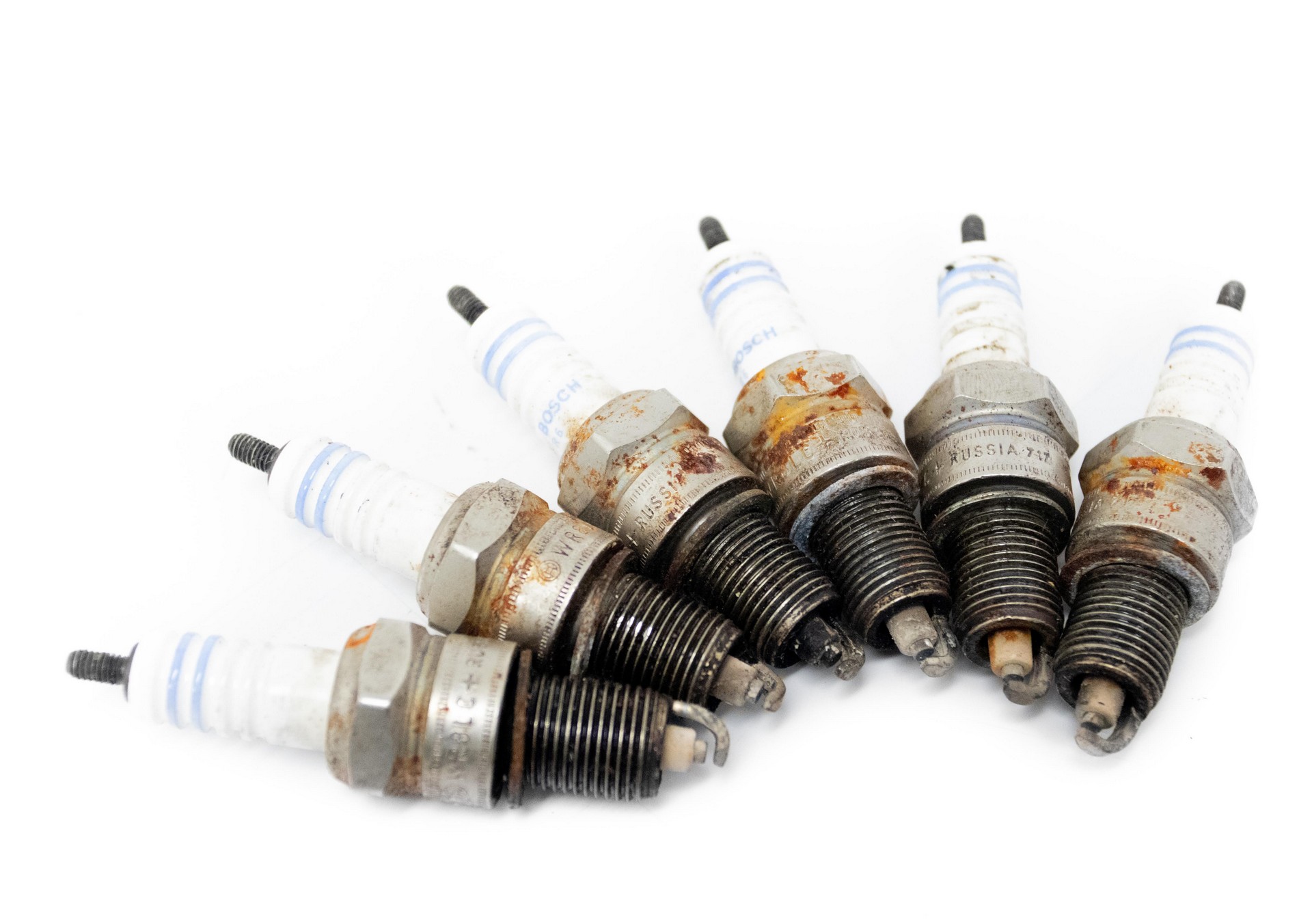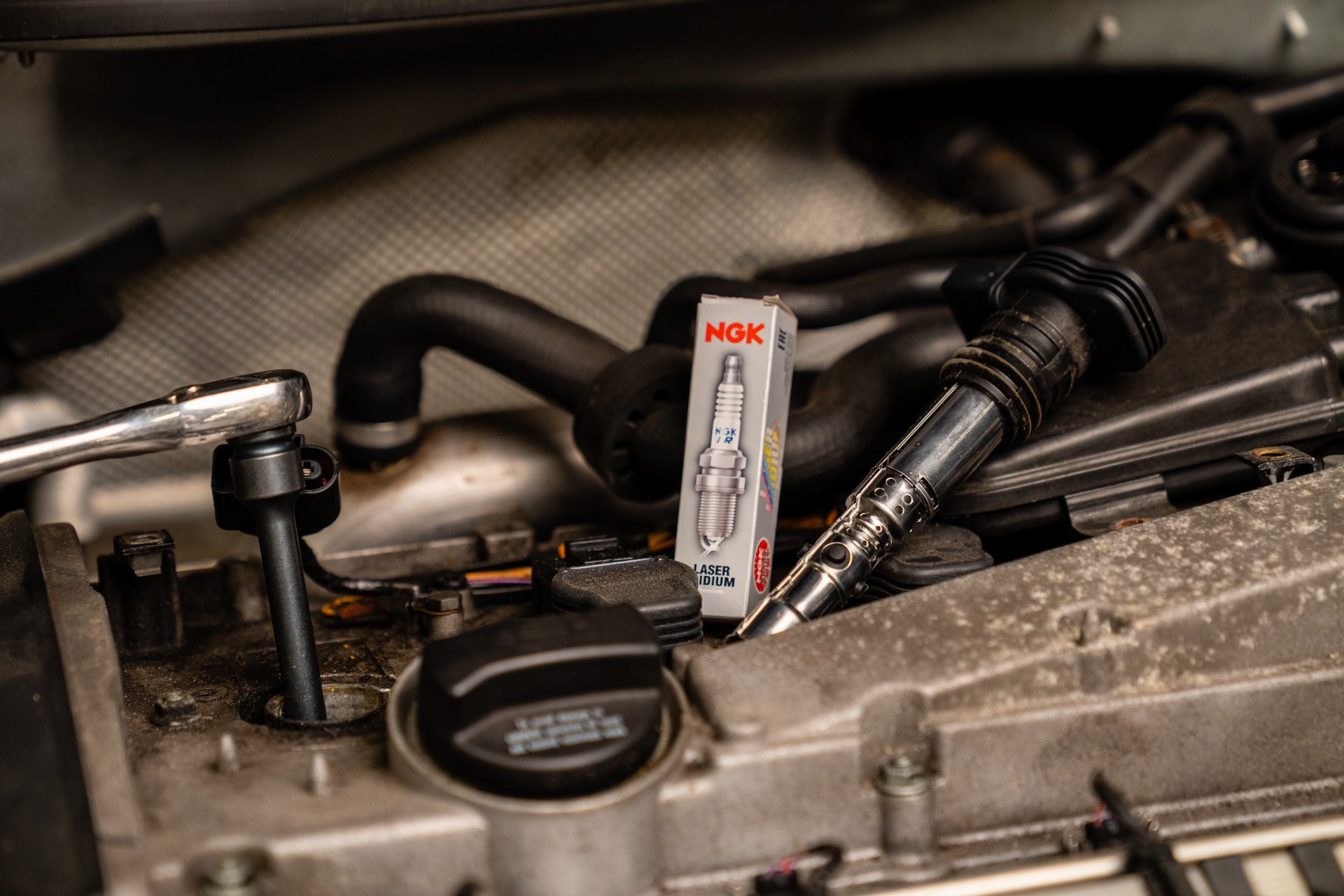- 08/28/2024
- 4 Min Read
- By: Christian Schaefer
Spark Plugs Explained - How To Read And Choose What's Best For You
Spark plugs are more than just something you need to replace every few oil changes. Their health directly influences performance and fuel economy, making them an integral part of the engine. Choosing the right one for your application can be a hassle with many different styles and performance ranges, but fear not; we’re here to help.
How Does A Spark Plug Work?
The spark plug's primary job is igniting the combustion chamber's fuel and air mixture. The ignition system supplies electricity, often through an individual ignition coil directly connected to the top of the plug. The electric charge is passed through the center electrode until it reaches the tip and arcs across to the ground electrode. As the charge arcs from electrode to electrode, it ignites the oxygen and gasoline mixture, and voila! Combustion!

When a spark plug goes wrong, it can be for many reasons, but the big ones other than extended use are non-stoichiometric running conditions and oil. The former refers to the air/fuel mixture entering the cylinder. Too much air in the mix is a lean mixture, which can overheat the spark plug, damaging the electrodes. Too much fuel in the mix is a rich mixture, which can coat the electrodes in unburnt fuel and carbon and block the electricity from arcing. Oil causes the same effect as a rich air/fuel mixture: it coats the electrodes and prevents the plug from firing reliably. In both cases, the phenomenon is called fouled spark plugs.
Fouled spark plugs can happen for several reasons out of your direct control, but the spark plug type certainly can play a role.
What Are The Different Kinds Of Spark Plugs?
Spark plugs were invented in 1860, so to say there have been a few different iterations would be an understatement. But when it comes to modern automotive engines, the grouping is much more concentrated. Their main differentiator lies within the metals used for the side and center electrodes. Toughness and thermal conductivity vary from one element to another, giving each spark plug differing qualities and applications based on the metals involved. That difference provides spark plugs with their defining characteristic, which is what you’ll most often see when looking online.
There are differences with the grounding electrode, too, but that’s not necessarily important for a standard replacement. You'll be good to go once you know what metal type you want.
Copper Plugs
Calling these copper plugs makes it sound like all others don’t use copper—which would be incorrect. It’s the most conductive metal after silver, making it a critical element to include, but it’s relatively soft with a low melting point. Left exposed in a combustion chamber, the copper tip wouldn’t last long. Instead, a nickel-alloy tip covers the copper core. Nearly as conductive as copper, its durability makes it the least expensive material manufacturers will use on their spark plugs. But don’t equate material cost with quality.
These inexpensive plugs are proven to provide the coolest burn and most peak power in high-performance situations. The trade-off is the worst durability of any modern plug variant. This spark plug type's average effective mileage falls between 20,000 and 30,000 miles, but a maximum of 10,000 hard miles isn’t unheard of. Vintage vehicles with distributor-based ignition systems are the most common applications for the copper spark plug, as it provides an intense burn and lasts about as long as a few other components in its outdated system. They can still be effective in modern engines, but using the plugs they were designed for is better.
Platinum Plugs
The platinum plug differs from the copper in that it uses a platinum disc fused to the copper core rather than a nickel alloy. Platinum is intensely more durable than the alloy in hardness and thermal conductivity, meaning its lifespan is roughly triple that of the copper plug. It burns hotter, which better prevents carbon from coating the electrodes, and can withstand the heat better, aiding its long lifespan. Expect 60,000 to 100,000 miles from a set of platinum plugs.

Iridium Plugs
Iridium plugs use an iridium tip fused to a copper core. Its strength and thermal durability far exceed platinum's, giving this plug unrivaled durability and better performance properties than platinum. They’re also easily identified by their “fine wire” tip. Iridium is so tough that manufacturers reduce tip size to below 0.5mm without any risk to longevity, which in turn provides a more concentrated spark and a lower draw on the ignition system. The cost for all of this is strictly monetary, as iridium isn’t the cheapest metal to source, but its minimum service life matching the maximum of the platinum should make up for that.

Double Platinum & Double Iridium Plugs
The double spark plug isn’t much different from its single counterpart. The difference is including the same metal, platinum or iridium, on the ground electrode. That’s not necessary for distributors or individual ignition coils, but it is for wasted-spark ignition systems where the electric charge jumps from the center electrode to the ground electrode and then back again.
The term “wasted spark” refers to the fact that it fires on the compression stroke and again on the exhaust stroke, caused by two cylinders sharing an ignition coil. It’s a common upgrade for anyone looking to ditch a distributor-style ignition without the cost and complexities of individual ignition coils.
What Is Spark Plug Heat Range?
If you’re reading or looking for this, there’s a good chance you’re somewhere on the path to modifying your engine. If not, enjoy the explanation, but don’t think about this too hard when choosing your next spark plug.
A spark plug needs to operate within a specific temperature range for its best performance. Too cold and carbon, fuel, and oil will build up on the electrodes, disrupting spark strength and reliability. Too hot, and the electrodes melt. It would be simple for engineers to find that range if all automotive engines shared a standard peak and average cylinder temperature, but they don't. Intensities within the combustion chamber vary wildly, rendering a single plug design inadequate for most powerplants, and that’s where the plug’s heat range comes into play.
The spark plug heat range determines how quickly it sheds its absorbed heat into the cylinder head. Manufacturers set where a spark plug falls on the heat range by manipulating the core’s ceramic insulation and the surrounding metal threads. A “hotter” plug has less ceramic insulation surrounding the core, exposing the core to more heat and slowing heat transfer. A “colder” plug has much more insulation, requiring a higher average cylinder temperature to keep within the ideal operating range. Modifying an engine to improve performance almost always intensifies the combustion, so that’s why you’ll see a tuner recommending a colder plug.
Spark Plug Replacement Costs
How much you spend on your spark plugs is determined mainly by what kind of engine you have. The latest high-powered track day specials require specialized plugs with short service intervals, while your run-of-the-mill Mercedes C300 requires a far more common type. Specializations, production volume, and metal type will all also play a factor in the cost, so the only way to figure it out is by researching which your particular car needs.

If you want to service your 991.2 GT3, genuine spark plugs from Porsche will run you about $33 apiece. Even though they’re the copper type with a 10,000-mile service interval, they’re a unique design from Bosch meant for engines of that nature. Mercedes’ M272 V6 is much more tame and found in hundreds of thousands of vehicles built over a decade plus. Its plugs are double platinum, but their commonality means you can purchase them for around $10 apiece. Even luckier than that are those with vintage vehicles, which require just the most basic copper plug type (a Bosch WR5DC for my 914). Those are even less expensive, at a maximum of $5 apiece.
From there, multiply the individual plug cost by the number of cylinders you have (or spark plugs for those with twin-plug ignitions), and you’ll have your primary cost. However, consider the last time your ignition coil or coils were replaced. They’re just as critical to spark production and may be ready for replacement.
Do I need To Gap Spark Plugs?
Not generally, no! Modern plugs almost always come pre-gapped to a safe level. The only time you’d be gapping your plugs would be on a vintage vehicle, a race car, or a heavily modified engine. The latter includes moving to a colder plug on an engine to which you’ve added power—it’s not a guarantee, but it does happen much more frequently in that context.

With all of that info at your disposal, you're now equipped to shop for whatever engine you may have. If you'd like to get away from the original plug type, do your research and seriously consider an engine tuner that is familiar with whatever you're modifying. Engines can be similar in theory, but individual characteristics have a huge effect on what works best. Otherwise, keep your eyes on the blog and our YouTube channels for more great content!


